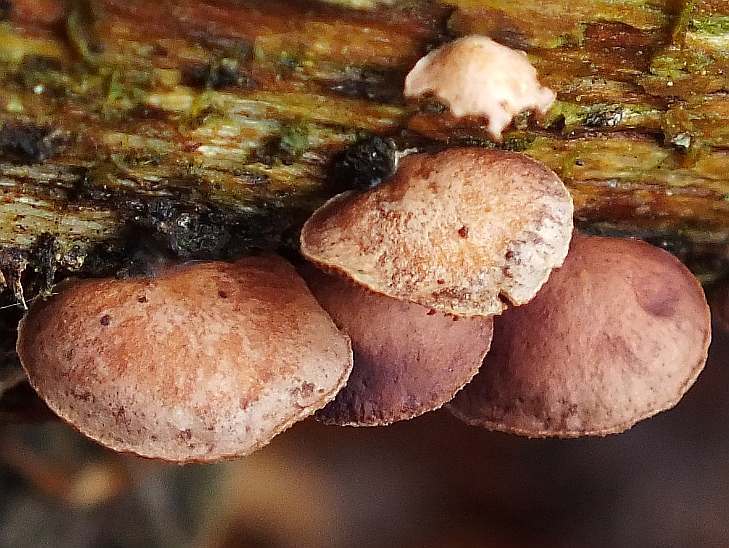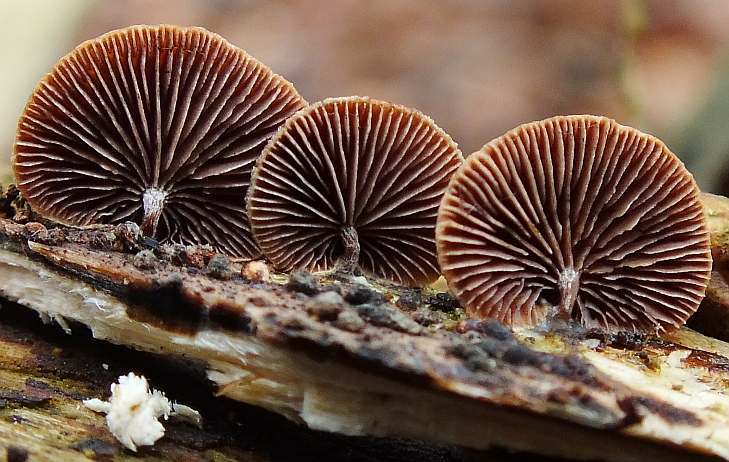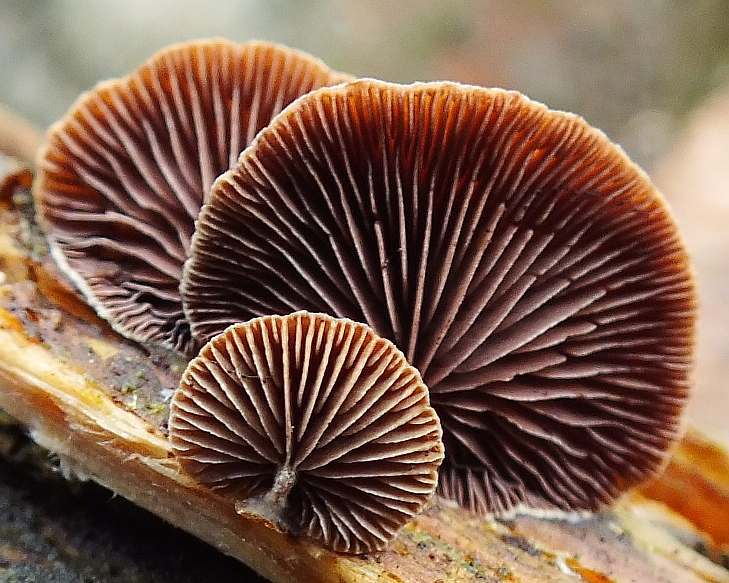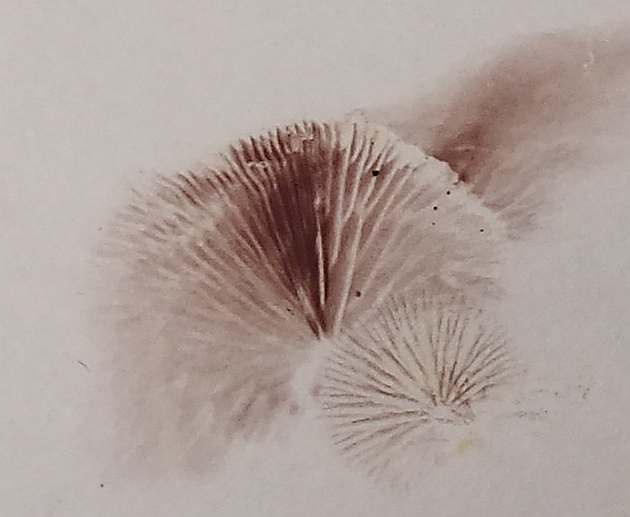1. Prof. WW miał niejedną "wpadkę" taksonomiczną w Checkliscie - przy takim dziele, robionym w pojedynkę, zdarza się.
2. Noordeloos w swoim dziele o Strophariace pisze: "For an overview of the nomenclatute of this species and the differences with Phaeomarasmius rimulinicola, see Orton (1960)."
3. Orton (Trans Brit Mycol Soc 1960, 43(2): 159-439) jednoznacznie wykłada, iż Phaeomarasmius rimulincola nie jest tożsamy z Melanotus horizontalis. Różnią się m.in. rozmiarem zarodników (12-16 x 7-8 vs. 6-8 x 5-6 um) i skórką kapelusza (jak wygląda Phaeomarasmius to dobrze wiemy). Oddając głos samemu autorowi: "It follows, then, that there are two fungi of similar excentric-stemmed habit and habitat on bark. N.[aucoria] horizontalis (Bull. ex Fr.) Quel. s. Bulliard, Fries, Rabenhorst, Saccardo, Rea, with smooth cap and on evidence of Rea and myself (see below) spores less than 10 um long; and N.[aucoria] rimulincola (Rabenh.) Sacc. (= N. horizontalis (Bull. ex Fr.) Quel. s. Quelet, Ricken, Kuhner, Singer Moser non Fries, etc.) with tomentose-wrinkled cap and spores over 12 um or more long, which is also described by Scherfell as P.[haeomarasmius] excentricus." (w [] moje uzupełnienia)
3. W Britsh Fungus Flora tenże sam Orton pisze: "This specific epithet [horizotalis] has usually been used for a member of the genus Phaeomarasmius following Quelet and Kuhner. However, this is incorrect and the fungus referred to both these authors is in fact P. rimulincola (Rabenh.) P.D. Orton."
4. W kluczach (na przykład Funga Nordica) jest zarówno Phaeomarasmius rimulincola jak i Melanotus (Deconica) horizontalis.
Można przyjąć, że dane Schrotera odnoszą się do Phaeomarasmius ("Hut (...) filzig-runzling. (...) Sporen (...) 12-18 (meist 15-17) um lang"). WW w swojej pracy nie podaje opisu okazu. Trzeba by sprawdzić, o ile się zachował.








